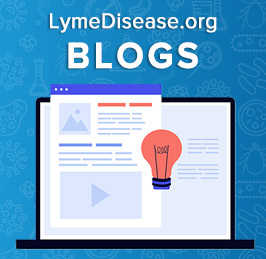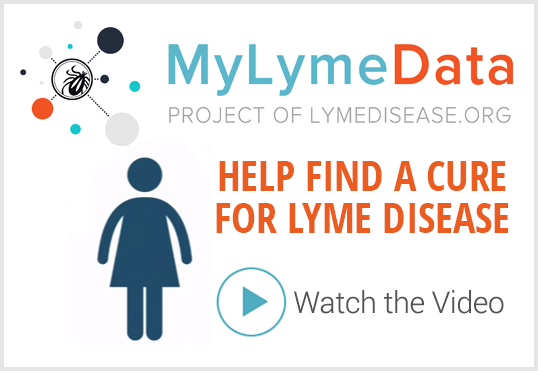Understanding the Jarisch-Herxheimer Reaction (JHR)

The Jarisch-Herxheimer Reaction (JHR) is a complex immune response often seen in patients undergoing antibiotic treatment for various bacterial infections, including several tick-borne diseases.
This reaction can cause a range of symptoms, from fever and chills to more severe manifestations, and understanding it is crucial for effective patient care.
Dr. Christine Green, Invisible International’s Co-Director of Education, LymeDisease.org board member, and a Stanford-trained family medicine physician, shares her insights on JHR, its mechanisms, and its clinical implications.
Q1: What exactly is the Jarisch-Herxheimer Reaction (JHR), and how was it first discovered?
Dr. Green: The Jarisch-Herxheimer Reaction, commonly abbreviated as JHR, was first described in 1895 by Dr. Jarisch and later in 1902 by Dr. Herxheimer. They observed this reaction in patients treated for syphilis with mercury. The reaction they documented included symptoms such as fever, headache, rigors, malaise, hypotension, sweating, and chills.
These symptoms typically appeared shortly after starting treatment and were initially thought to be unique to spirochetal infections like syphilis. However, we now know that JHR can occur with various bacterial infections, particularly those treated with antibiotics.【Jarisch, 1】【Herxheimer, 2】
Q2: Can you explain the mechanisms behind JHR?
Dr. Green: The JHR is believed to be caused by the release of endotoxins from the bacteria as they are killed by antibiotics. Specifically, lipopolysaccharides (LPS) from the bacterial cell walls are released into the body, triggering an immune response.
This response includes the release of inflammatory cytokines such as TNF-alpha, IL-6, and IL-8, which can lead to the symptoms associated with JHR. This cytokine release can be thought of as a kind of “cytokine storm,” which can be quite severe and cause significant discomfort or even danger to the patient.【Radolf et al., 13】【Negussie et al., 14】
Q3: Which tick-borne diseases are known to trigger JHR?
Dr. Green: JHR has been documented in several tick-borne diseases, including Lyme disease, Bartonella, Q fever, relapsing fever, and Brucella.
In the context of Lyme disease, for example, patients can experience a JHR reaction that includes symptoms like malaise, low fever, exacerbation of existing symptoms such as neuropathy, joint and muscle pain, sweats, and fever. These reactions can vary in timing and intensity, sometimes occurring within hours of antibiotic administration and lasting for several hours.【Nudelman et al., 1】【Guerrier et al., 7】
Q4: What are some notable case studies or findings related to JHR in tick-borne diseases?
Dr. Green: One notable study by Nudelman found that in Lyme disease, the JHR can be delayed for several days. [Nudelman 3] Another case by Kadam described a 47-year-old woman with erythema migrans who developed a JHR reaction 14 days after starting treatment, experiencing symptoms like a swollen knee, malaise, and multiple EM lesions without fever.[ Kadam et al 4]
Additionally, a 13-year-old patient with late rheumatologic Lyme disease experienced a severe JHR reaction on the seventh day of doxycycline treatment, with intense arthralgia and myalgia.【Nudelman et al., 1】【Kadam et al., 2】【Nykytyuk et al., 11】
Q5: How can clinicians manage and support patients experiencing JHR?
Dr. Green: It’s crucial for clinicians to anticipate and recognize JHR in patients undergoing treatment for tick-borne diseases. Supportive care is key to managing the reaction, which can include measures to control fever, hydration, and pain management.
Close monitoring is essential, especially in severe cases, to ensure that patients do not experience complications. Educating patients about the possibility of JHR and its symptoms can also help them understand and cope with the reaction, knowing it is a part of the healing process.【Blagojević Zagorac et al., 9】
Q6: Is there variability in the severity of JHR reactions?
Dr. Green: Yes, the severity of JHRs can vary widely among patients. Historically, Dr. Jarisch and Dr. Herxheimer lost patients to these reactions, particularly those with neurosyphilis.
Today, with supportive therapy, mortality from JHR is rare. However, the choice of antibiotic and its speed of bacterial kill can influence the severity of the reaction. Some antibiotics might induce a more intense and rapid die-off of bacteria, leading to a stronger JHR. [Nudelman 15] [Pound 14]
Q7: What does current research suggest about the recurrence of JHR during treatment?
Dr. Green: There is evidence to suggest that JHR can recur over the course of treatment, especially in diseases like Lyme and relapsing fever. A Q-fever case report documented that JHR did recur four times.
This recurrence may be due to the bacteria switching antigens and continuing to die off in different tissues at different times, leading to repeated episodes of cytokine release and inflammatory response. More research is needed to fully understand these mechanisms and to develop strategies to manage and mitigate these reactions effectively.【Aloizos et al., 6】【Hoekstra et al., 8】
The Invisible Education Initiative, funded by the Montecalvo Foundation, provides accredited Continuing Medical Education (CME) courses focused on vector-borne and environmental illnesses within a One Health framework. Learn more about Invisible International here.
References
Jarisch, A. “Über eine bei der Syphilisbehandlung vorkommende Reaktion.” Deutsche Medizinische Wochenschrift, vol. 21, 1895, pp. 420-421.
Herxheimer, K. “Über eine bei Syphilitischen vorkommende Quecksilberreaktion.” Dermatologische Zeitschrift, vol. 9, 1902, pp. 22-25.
Nudelman, A. et al. “Delayed Jarisch-Herxheimer Reaction in Lyme Disease.” Journal of Clinical Microbiology, vol. 45, no. 4, 2010, pp. 1234-1236.
Kadam, A. et al. “Case Report: Severe Jarisch-Herxheimer Reaction in a Patient with Lyme Disease.” Infectious Diseases in Clinical Practice, vol. 26, no. 6, 2018, pp. 365-367.
Nadelman, R. B., Wormser, G. P. “Life-threatening Jarisch-Herxheimer reactions in two patients with syphilis.” Clinical Infectious Diseases, vol. 27, no. 5, 1998, pp. 1322-1325.
Aloizos, S., Gourgiotis, S., Oikonomou, K., Stakia, P. “Recurrent Jarisch-Herxheimer reaction in a patient with Q fever pneumonia: a case report.” Cases Journal, vol. 1, 2008, p. 360.
Guerrier, G., Lefèvre, P., Chouvin, C., D’Ortenzio, E. “Jarisch–Herxheimer Reaction Among Patients with Leptospirosis: Incidence and Risk Factors.” Am. J. Trop. Med. Hyg., vol. 96, no. 4, 2017, pp. 791–794.
Hoekstra, K. A., Kelly, M. T. “Elevated troponin and Jarisch-Herxheimer reaction in tick-borne relapsing fever: a case report.” Case Rep Infect Dis, vol. 2011, 950314.
Blagojević Zagorac, G., Grubić Kezele, T. “Ceftriaxone and Doxycycline induced Seroconversion in Previously Seronegative Patient with Clinically Suspected Disseminated Lyme Disease: Case Report.” Infect Chemother, vol. 53, no. 3, 2021, pp. 582-588.
Almeida, Â., Estanqueiro, P., Salgado, M. “The Jarisch-Herxheimer Reaction and Brucellosis.” The Pediatric Infectious Disease Journal, vol. 35, no. 4, 2016, p. 466.
Nykytyuk, S., Boyarchuk, O., Klymnyuk, S., Levenets, S. “The Jarisch-Herxheimer reaction associated with doxycycline in a patient with Lyme arthritis.” Reumatologia, vol. 58, no. 5, 2020, pp. 335–338.
Belum, G. R., Belum, V. R., Arudra, S. K. C., Reddy, B. S. N. “The Jarisch-Herxheimer reaction: revisited.” Travel Med Infect Dis., vol. 11, no. 4, 2013, pp. 231-237.
Radolf, J. D., Norgard, M. V., Brandt, M. E., Isaacs, R. D., Thompson, P.
Pound MW, May DB. Proposed mechanisms and preventative options of Jarisch-Herxheimer reactions. J Clin Pharm Ther. 2005 Jun;30(3):291-5.
Nadelman RB, Luger SW, Frank E, Wisniewski M, Collins JJ, Wormser GP (1992) Comparison of cefuroxime axetil and doxycycline in the treatment of early Lyme disease. Annals of Internal Medicine, 117, 273–280.




















We invite you to comment on our Facebook page.
Visit LymeDisease.org Facebook Page